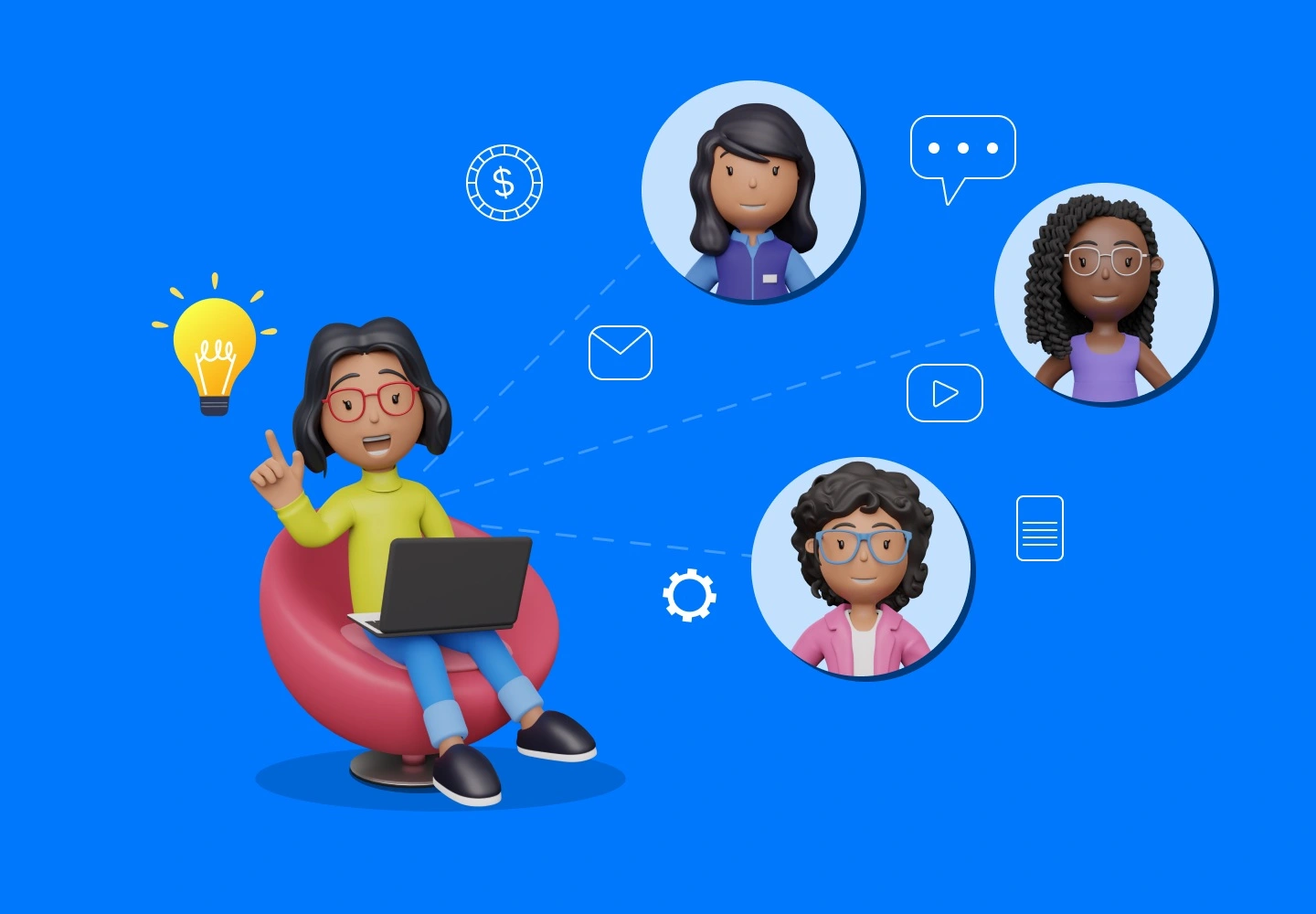Many businesses struggle to keep customers truly engaged. Without strong connections, customers drift away, loyalty drops, and growth stalls.
Customer engagement isn’t just a nice-to-have; it’s the key to building lasting customer relationships and driving success.
In fact, according to Gallup, fully engaged customers contribute 23% more in terms of profitability, revenue, share of wallet, and relationship growth.
That’s why adopting powerful engagement strategies is essential. In this guide, you’ll discover proven strategies and follow-up practices to take your business to the next level.
What is customer engagement?
Customer engagement is the ongoing process of building strong relationships between a business and its customers beyond simple transactions.
It focuses on creating meaningful interactions through marketing, content, and communication across various channels, such as social media, mobile, and other digital platforms.
Beyond product or service interactions, active communities also play a crucial role in enhancing engagement.
Why is client engagement important?
The goal of customer engagement goes far beyond simple interactions. When customers feel connected to your brand, they’re more likely to stay loyal, spend more, and advocate for your business.
Let’s explore some of the benefits of customer engagement.
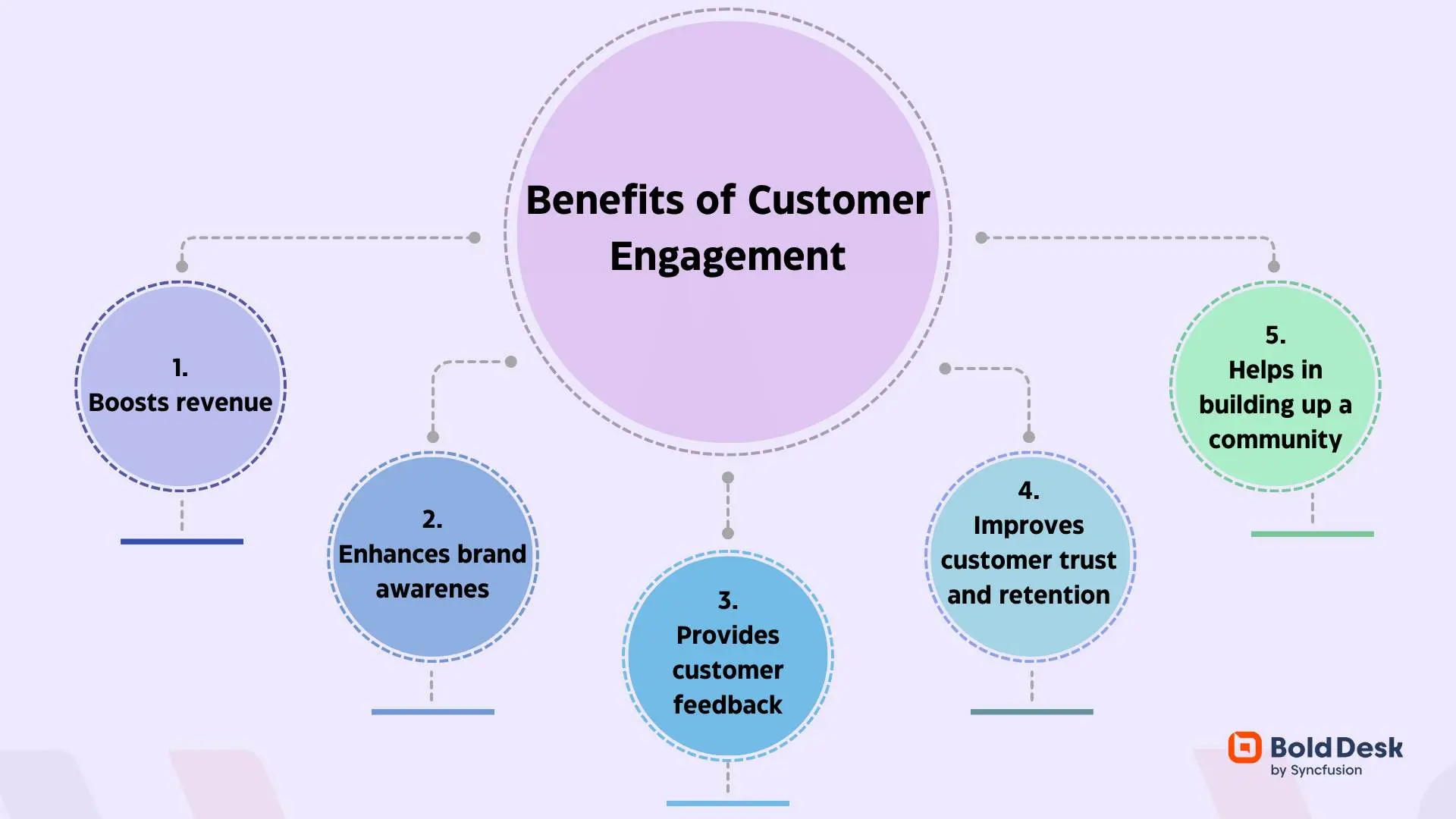
- Boosts revenue: Customer engagement for sales drives repeat purchases and opens doors for upselling premium features and cross-selling complementary products. Engaged customers buy more, stay longer, and cost less to retain than acquiring new ones, ultimately generating new revenue streams and fueling long-term profitability.
- Enhances brand awareness: Customer engagement for service creates lasting impressions that inspire clients to share your brand with their network. This drives word-of-mouth marketing, strengthens your brand image, and expands your reach in the market.
- Provides useful customer feedback: Engagement from customer service helps brands gather valuable insights into clients’ preferences and needs. Using surveys, social media, and questionnaires makes it easy to collect customer feedback, which in turn improves products or services and boosts customer satisfaction.
- Improves customer trust and retention: Personalized customer engagement shows genuine interest in your clients, making them feel valued and acknowledged. This builds emotional connections, reduces churn, and increases the likelihood of repeat purchases, strengthening loyalty over time.
- Helps in building up a community: Client engagement fosters a sense of belonging by encouraging customers to share their experiences with your brand and connect with others who share similar interests. This creates a vibrant community around your brand.
Top customer engagement strategies for businesses
A thriving business has a strong customer engagement plan at its core, which focuses on fostering emotional connections, loyalty, trust, and advocacy among customers.
So, how does a business achieve this? Let’s explore the best customer engagement strategies that you should leverage:
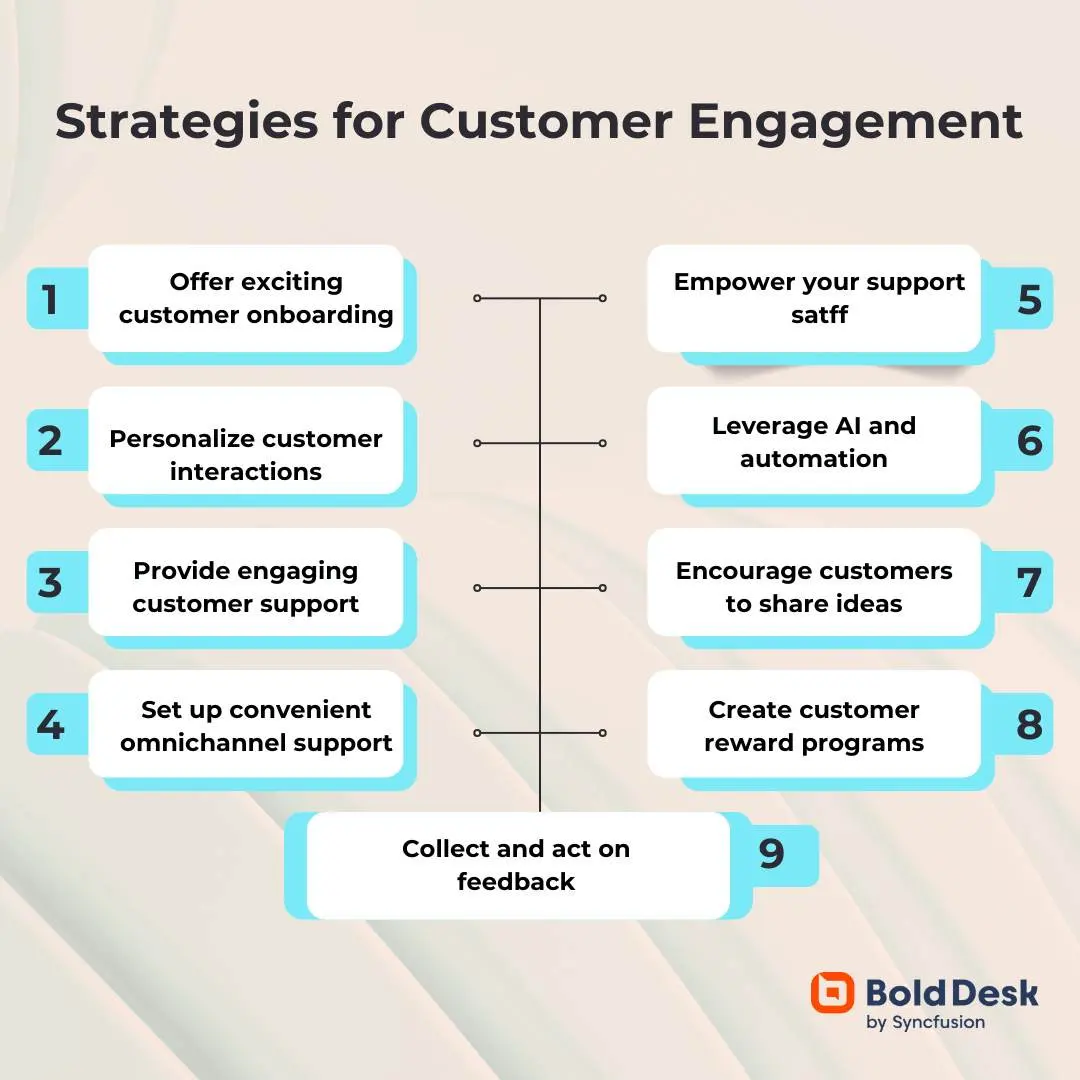
Offer an exciting customer onboarding experience
First impressions matter. A well-executed customer onboarding experience sets the tone for future interactions, accelerates product adoption, and builds loyalty, turning new customers into long-term advocates.
To make onboarding a powerful engagement tool:
- Use welcome videos or interactive walkthroughs to showcase the benefits of your products.
- Establish transparent communication by providing clear expectations and easy access to support from day one.
- Follow up on progress, sending personalized check-ins and offering assistance where needed.
- Educate and empower by sharing tutorials, FAQs, and guides that help customers get the most out of your product.
- Customize the onboarding steps based on user preferences and goals for maximum relevance.
Personalize every customer interaction
Personalization isn’t just a trend; it’s a proven driver of loyalty.
A study conducted by Twillio revealed that over a third of consumers say they’ll return to a brand following a personalized experience, even if there are cheaper or more convenient options available elsewhere.
It is therefore imperative to cater to customers’ individual preferences and make every interaction you have with your customers count by:
- Tailoring content, recommendations, and interactions based on past purchases, browsing history, and demographics.
- Utilize tools such as AI-driven product suggestions, personalized email campaigns, and dynamic website content.
Provide conversational customer support
Customers want support that feels human, not robotic. Conversational support can create a natural, friendly experience that builds trust and strengthens engagement across all channels.
To nurture lasting, fruitful relationships:
- Adopt a warm, approachable tone in chats and emails to make interactions feel personal.
- Initiate brief, casual conversations instead of jumping straight to problem-solving.
- Use client-specific details in responses, such as their name, past interactions, or preferences, to show genuine attention.
- Adopt conversational AI for customer service to deliver personalized, real-time customer support.
Set up convenient omnichannel support
An effective omnichannel customer engagement strategy ensures customers can reach you through their preferred channels, whether it’s live chat, email, social media, or self-service portals.
You can:
- Integrate all channels into a unified customer engagement platform so conversations flow seamlessly.
- Offer 24/7 customer service through AI-powered responses for quick resolutions.
- Maintain consistent messaging and service quality across every channel.
This omnichannel customer service approach not only improves accessibility but also fosters a seamless, connected engagement across channels.

Empower your support staff
When staff feel trusted and equipped, they take ownership of their work, show higher job satisfaction, and actively contribute to improvements.
To improve the employee experience:
- Give your support staff the autonomy, tools, and training they need to resolve issues quickly and confidently.
- Provide access to a centralized knowledge base, real-time collaboration tools, and customer history data.
- Promote a culture of continuous learning through regular training sessions, product updates, and skill-building workshops.
This ensures your team stays informed and proactive, enabling them to anticipate customer needs and deliver customized, efficient customer engagement marketing.
Leverage AI and automation
Help desk automation and AI in customer engagement make interactions faster, smarter, and more personalized.
For this technology to keep customers engaged and satisfied, you need to:
- Implement an AI Copilot to draft replies, summarize, and translate, while deploying AI agents to handle real-time customer queries.
- Use predictive analytics to anticipate customer needs based on behavior and purchase history.
- Automate personalization to deliver tailored recommendations, dynamic content, and targeted offers automatically.
- Streamline workflows by automating repetitive tasks like automated ticket routing and follow-up emails.
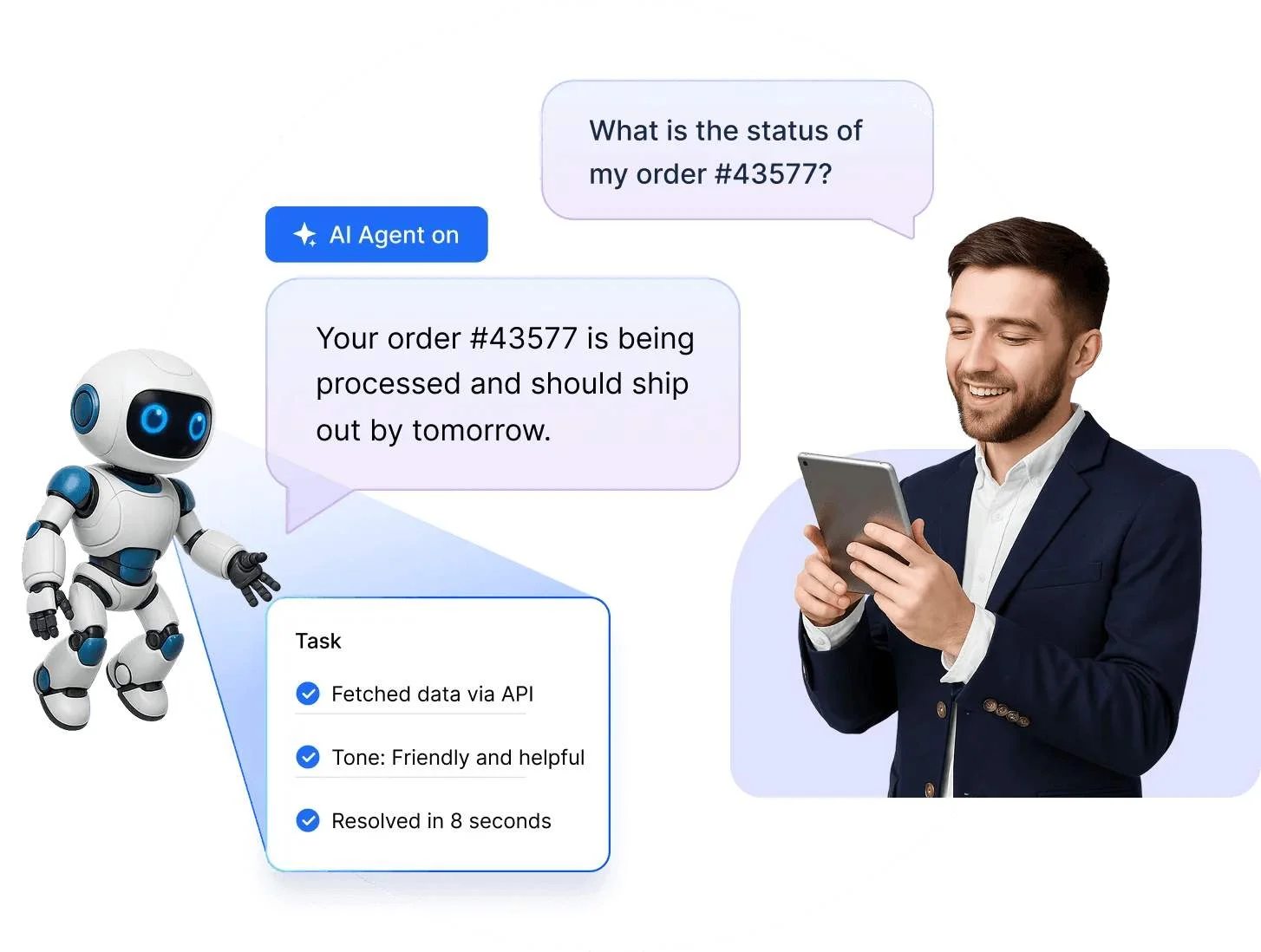
Encourage customers to share ideas
Turning customers into collaborators strengthens engagement and drives innovation.
This can be achieved by creating easy-to-use channels, such as idea boards, feedback forms, or community forums, where customers can submit suggestions and vote on others’ ideas.
Show customer appreciation by publicly acknowledging contributions and appreciating customers whose recommendations were implemented.
Share success stories like “Your idea made it happen!” to inspire more involvement. This approach fosters a sense of community, builds trust, and helps you stay ahead of customer needs while improving satisfaction and loyalty.
Create customer recognition and reward programs
Recognizing loyal customers is a strategic customer engagement plan that fosters a strong sense of connection and value between a company and its clients.
To do it right, you can:
- Offer redeemable points for purchases, referrals, and social engagement.
- Provide exclusive perks like discounts, early access to new products, and VIP experiences.
- Celebrate milestones, acknowledge anniversaries, or spend thresholds with personalized messages and special rewards.
Collect and act on feedback
Customer feedback is the backbone of customer engagement. It tells you what’s working and what needs improvement. To make this strategy effective:
- Deploy surveys, polls, and feedback widgets on your website, app, and social media.
- Ask the right questions, focusing on customer experience, product usability, and satisfaction levels.
- Use customer engagement analytics tools to analyze and respond promptly based on insights.
- Close the loop by informing customers when their feedback leads to improvements.
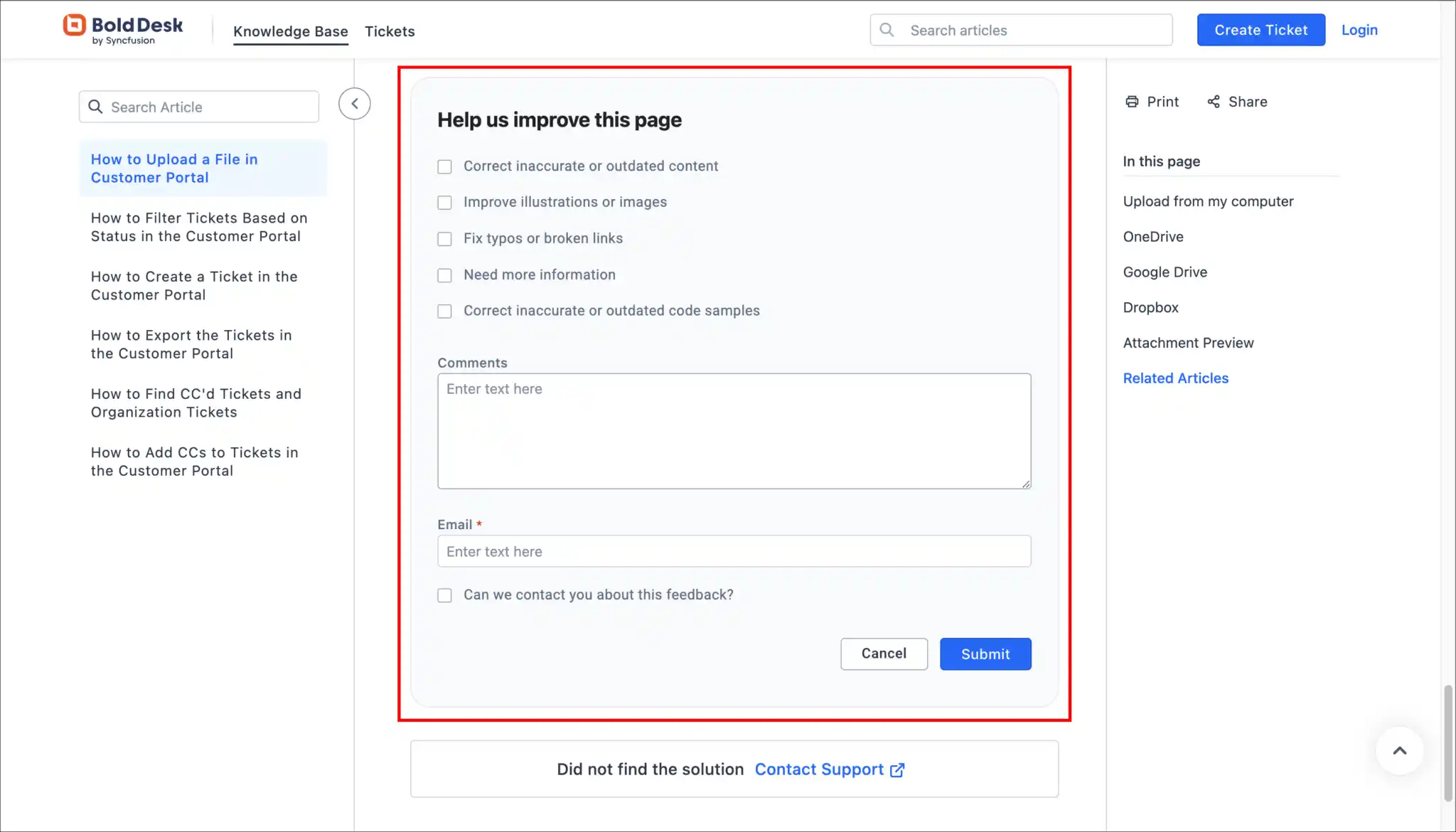
How to measure customer engagement success
Measuring customer engagement goes beyond counting likes or clicks. It’s about tracking meaningful connections that show customers are truly invested in your brand.
But here’s the big question: how do you know if your engagement strategy is actually working?
The answer lies in tracking the right customer engagement metrics and turning insights into action.
- Customer satisfaction (CSAT) survey: CSAT surveys measure how happy customers feel after interacting with your business. By sending quick post-interaction surveys, you capture real-time customer sentiment and identify opportunities to improve the experience.
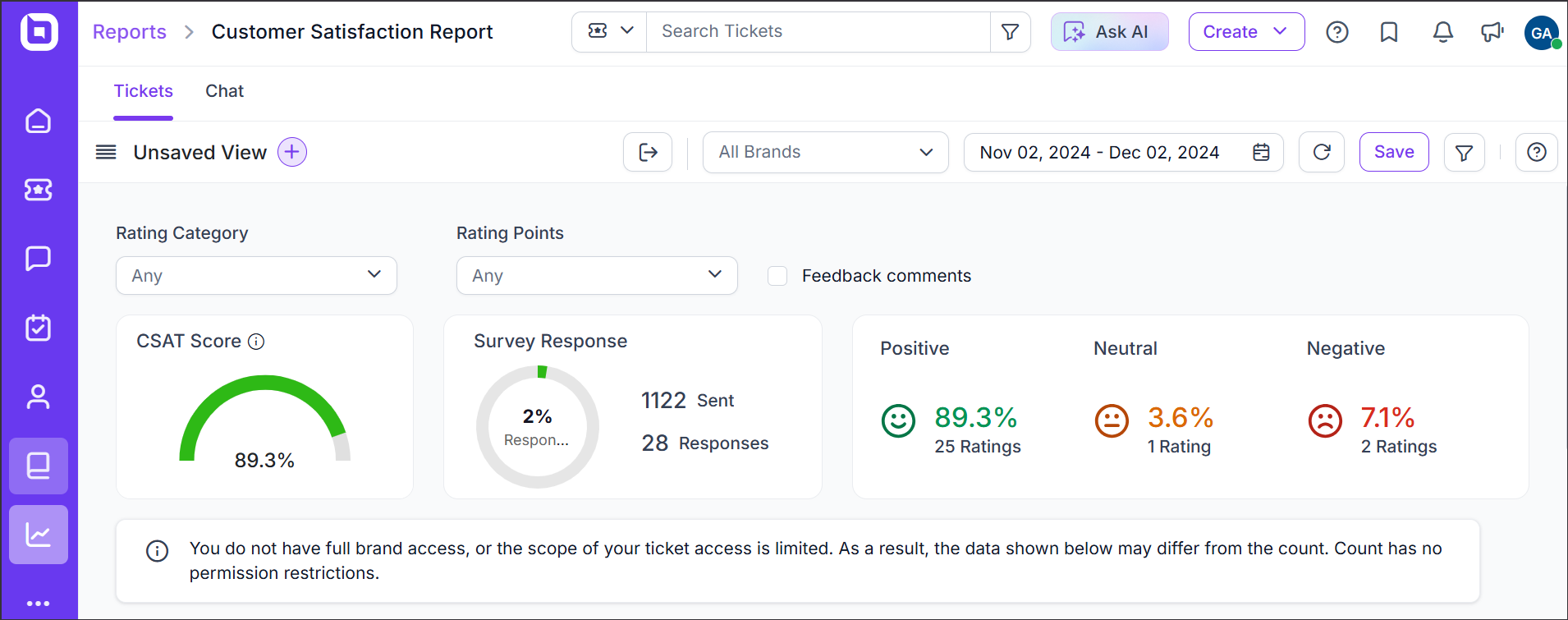
-
-
- Net promoter score (NPS): NPS gauges customer loyalty by asking how likely they are to recommend your products or services. A high NPS indicates strong advocacy, while a low score signals the need for better engagement strategies.
- Customer effort score (CES): CES evaluates how easy it is for customers to complete tasks, such as finding information or resolving issues. Lower effort scores mean smoother experiences, which often lead to higher satisfaction.
- Social media engagement metrics: These metrics track how customers interact with your brand on social platforms, likes, shares, comments, and mentions. High engagement signals strong brand affinity and opens opportunities for community building.
- Pages per session: This metric measures the number of pages a visitor navigates during a single session. More pages per session often indicate deeper interest in your content and stronger engagement.
- Customer retention rate: Tracks the percentage of customers who continue doing business with you over a specific period. A high retention rate reflects strong loyalty and effective engagement strategies.
- Customer churn rate: Calculates the percentage of customers who stop using your product or service. Monitoring churn helps you identify pain points and take proactive steps to retain customers.
- Average session duration: Shows the average time customers spend on your site or blog in one visit. Longer sessions typically mean your content is relevant and engaging.
- Conversion rates: Measures the percentage of customer interactions that lead to desired actions, such as purchases, subscriptions, or upgrades. High conversion rates indicate that your engagement efforts are driving tangible results.
Leading customer engagement examples
Driving high digital engagement rates across every touchpoint creates experiences that make customers feel valued, connected, and excited to interact.
Here are some successful customer engagement examples that show how companies turn interactions into lasting relationships:
Nike
Nike’s customer engagement strategy stands out due to its membership-based club applications, which are centered around assisting users in achieving their objectives. These membership-based club applications include:
- Nike Run Club: Nike engages its customers through the Nike Run Club app, where users can track their runs, get personalized coaching plans, and share their achievements with a community of runners. This not only promotes the use of Nike products but also creates a community around the brand.
- Nike Training Club: Similar to the Nike Run Club, this app offers fitness enthusiasts workout plans and guidance, thus strengthening customer engagement.
The brand also operates an exclusive Nike Membership program that offers member-only styles, free shipping, special deals, and more.
Canva
Canva boasts a large user base spanning several nations. They maintain an active and engaged customer base by:
- Providing interactive tutorials to help users create designs. This engages users by helping them learn how to use the platform while also creating content.
- Actively engaging with users on social media platforms like Facebook, X, and Instagram. They share user-generated content, respond to comments, and post relevant content to engage their audience.
- Running design challenges and contests, inviting users to engage with the platform and showcase their design skills. They also conduct the #CanvaDesignChallenge campaign, which is promoted through email and social media, to motivate customers to use their product.
Spotify
Spotify links with music enthusiasts around the globe via its vibrant Spotify community. Spotify frequently offers unique value propositions to its customers by routinely providing them with customized playlists that reflect their listening preferences.
Spotify’s customer engagement strategy involves:
- Personalized playlists: Spotify engages its users by creating personalized playlists based on their listening habits.
- Social sharing: Spotify allows users to share what they’re listening to on social media platforms, encouraging engagement not just within the Spotify app, but across other social networks as well.
Coca-Cola
Coca-Cola has several customer engagement techniques:
- “Share a Coke” campaign: Coca-Cola’s “Share a Coke” campaign was a perfect example of customer engagement. They replaced their traditional logo with the most popular names, encouraging customers to buy a Coke bottle with their name on it and “share a Coke.” Their sales saw a significant boost due to the huge success of the campaign.
- Coke Studio: This music television series sponsored by Coca-Cola brought together different artists to collaborate and create unique music. This engaged customers not only with the brand but also with the music, creating a strong emotional connection.
- Coke Rewards Program: Coca-Cola’s rewards program encouraged customers to collect points from product purchases and redeem them for prizes. This program not only increased sales but also fostered customer loyalty.
Slack
Slack has become a vital tool for many professionals. Slack understands the significance of its software in its users’ lives and the role it plays in fostering an “always-on” culture. To address this, Slack has the following engagement techniques:
- Personalized onboarding: When a user signs up for Slack, they receive a personalized onboarding experience. Slack guides users through the various features and functionalities, ensuring they understand how to use the platform effectively.
- Slackbot: This is an automated assistant that helps users navigate the platform. It answers questions, provides tips, and prompts users to complete tasks, engaging them and enhancing their user experience.
- User community: Slack features a user community where individuals can exchange their experiences, pose questions, and offer feedback. This engages users, making them feel a part of the community, and it improves the platform based on users’ needs.
- Regular updates: Slack regularly updates its platform with new features and improvements, keeping users engaged and interested. Updates are communicated via email, in-app notifications, and through their blog.
Foster stronger bonds with smart customer engagement strategies
Proactive engagement isn’t just a trend; it’s a growth driver. Every interaction you have with customers shapes their perception of your brand and influences loyalty.
But here’s the catch: having strategies without proper customer engagement tools is like having a map without a vehicle; you won’t get far.
BoldDesk bridges that gap. With robust features like AI-powered automation, omnichannel support, real-time feedback collection, and self-service options, BoldDesk empowers you to implement, track, and optimize engagement strategies effortlessly.
Ready to elevate your digital engagement rates and build lasting customer relationships? Contact our support team to see how BoldDesk’s features can be customized to meet your business’s specific needs.
We’d love to hear from you! Leave a comment below, sharing your favorite customer engagement strategy, or asking us any questions.
Related articles
- What is Customer Retention? (10 Powerful Strategies & Metrics)
- Customer Follow-Up: Its Importance and Effective Ways to Do It
- Customer Support Operations: Building Teams That Thrive
Frequently Asked Questions
A customer engagement strategy is a structured plan that outlines how a business will interact with customers across various touchpoints to build trust, loyalty, and long-term relationships.
It typically includes personalized communication, proactive support, and activities designed to keep customers actively involved with the brand.
Customer engagement refers to the ongoing interactions and activities that build a relationship between a brand and its customers, such as personalized communication or loyalty programs.
Customer experience, on the other hand, is the overall perception and feeling customers have about your brand based on all touchpoints and interactions throughout their journey.
Businesses often struggle with maintaining consistent engagement across multiple channels, especially as customer expectations for personalization and speed continue to rise.
Additionally, measuring engagement effectively and turning insights into actionable improvements can be difficult without the right tools and data analytics.
-
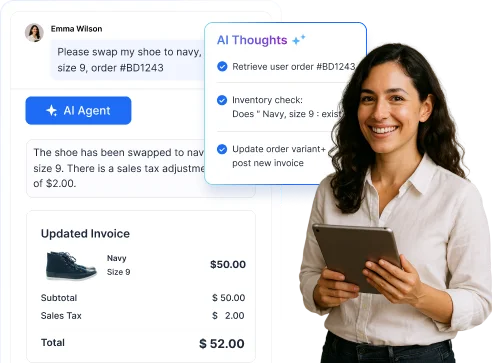


















 Email Ticketing System
Email Ticketing System Shared Inbox Software
Shared Inbox Software Multi Brand Help Desk
Multi Brand Help Desk Internal Help Desk Software
Internal Help Desk Software Trouble Ticketing Software
Trouble Ticketing Software Mobile Help Desk
Mobile Help Desk 









